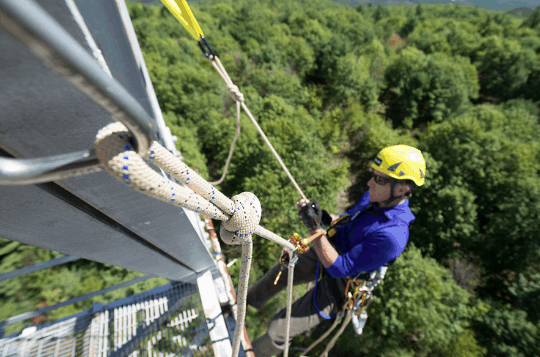A Primer on Rope Certifications
Introduction
A Primer on Rope Certifications… crucial for ensuring the safety, durability, and reliability of ropes used in various applications, from technical rescues to recreational climbing. Understanding these certifications helps users select the best rope for their needs while adhering to industry standards and safety requirements.
This primer explores key aspects of rope certifications, including governing bodies, testing methods, and the differences between ropes designed for specific uses.
Why Rope Certifications Matter
Ropes are subjected to extreme conditions in both rescue and recreational environments. Certification guarantees that a rope meets predefined performance and safety standards, providing users with confidence in their equipment. Certified ropes undergo rigorous testing to ensure they can withstand the expected forces, environmental conditions, and operational demands.
Key Certification Standards
1. NFPA (National Fire Protection Association)
The NFPA establishes rope standards primarily for rescue operations. These ropes must meet stringent requirements for static elongation, tensile strength, and diameter.
- Types of NFPA-Certified Ropes:
- Technical Use Rope (G-rated): Designed for technical rescue scenarios, these ropes are lighter and have lower elongation.
- General Use Rope (T-rated): Heavier-duty ropes used in high-load applications.
2. UIAA (International Climbing and Mountaineering Federation)
The UIAA certifies ropes for climbing and mountaineering. These ropes undergo drop tests to simulate real-world falls and assess their performance.
- Categories of UIAA Ropes:
- Single Ropes: Used for standard climbing routes.
- Half Ropes: For more complex climbing scenarios, used in pairs.
- Twin Ropes: Always used together for maximum redundancy.
3. EN (European Norms)
EN standards align closely with UIAA but also address additional safety aspects, including chemical resistance and thermal shrinkage.
Testing Methods and Criteria
Certified ropes are subjected to various tests to measure their performance under load, resistance to abrasion, and elongation. Key tests include:
- Tensile Strength: Measures the maximum force a rope can handle before breaking.
- Static Elongation: Assesses how much a rope stretches under a static load.
- Dynamic Testing: Simulates falls to evaluate energy absorption and durability.
Choosing the Right Certified Rope
When selecting a rope, consider the following factors:
- Application: Choose a rope certified for your specific needs, whether it’s for climbing, rescue, or industrial use.
- Diameter: Larger diameters often provide greater strength but may be heavier and less manageable.
- Material: Most certified ropes are made from nylon or polyester, each with unique properties for different environments.
Certifications and Their Real-World Impact
Rope certifications are not just about compliance—they’re about trust. Using certified ropes ensures that your equipment will perform reliably under expected conditions, giving you peace of mind in high-stakes situations.
Explore More at Rigging Lab Academy
- Guide to Rope Materials and Types
- Best Practices for Rope Maintenance
- Understanding NFPA Standards for Rescue
Conclusion
Rope certifications are essential for maintaining safety and reliability in demanding applications. By understanding certification standards and their implications, you can make informed decisions that enhance both performance and safety.
Peace on Your Days,
Lance










9 thoughts on “A Primer on Rope Certifications”
This is a topic close to my heart cheers, where are your contact details though?
Hi there! This post couldn’t be written any better! Reading through this post reminds me of my previous room mate! He always kept talking about this. I will forward this article to him. Pretty sure he will have a good read. Thank you for sharing!
Hello! I could have sworn I’ve been to this blog before but after browsing through some of the post I realized it’s new to me. Anyways, I’m definitely happy I found it and I’ll be book-marking and checking back frequently!
Wonderful article! That is the kind of info that are supposed to be shared
around the net. Disgrace on Google for no longer positioning this submit upper!
Come on over and discuss with my website .
Thanks =)
975913 77033Can I merely say exactly what a relief to get someone who truly knows what theyre dealing with on the internet. You really know how to bring a difficulty to light and make it crucial. The diet should see this and fully grasp this side on the story. I cant believe youre not a lot more common because you undoubtedly hold the gift. 966934
427347 158450I like this weblog its a master peace ! Glad I detected this on google . 167210
899091 166757You wouldnt feel it but Ive wasted all day digging for some articles about this. You may be a lifesaver, it was an excellent read and has helped me out to no finish. Cheers! 309029
Good write-up, I am normal visitor of one?¦s blog, maintain up the nice operate, and It’s going to be a regular visitor for a long time.
I haven’t checked in here for a while as I thought it was getting boring, but the last several posts are good quality so I guess I will add you back to my daily bloglist. You deserve it my friend 🙂
Comments are closed.